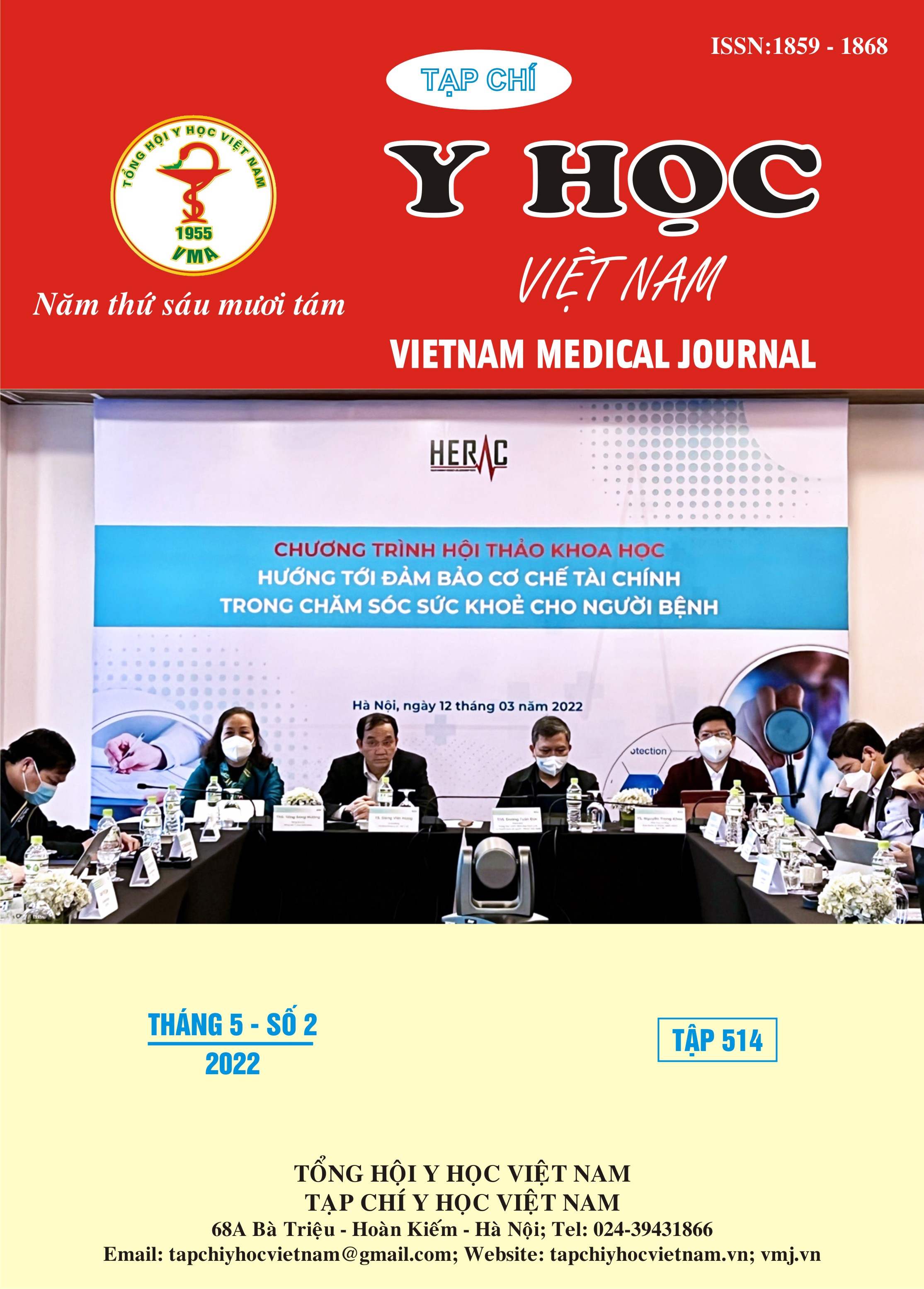VALUATION OF JNET AND KUDO CLASSIFICATIONS COMPARED WITH HISTOPATHOLOGY IN COLORECTAL POLYPS
Main Article Content
Abstract
Background: Colorectal polyp is a common disease and has risks of malignancy. White light endoscopy can help to detect polyps, but it is still limited in accurately predicting polyp histopathology. Advanced endoscopic techniques have been developed to help observe in more detail the mucosal surface, submucosal vascular structure, thereby accurately predicting polyp histopathology results, supporting accurate treatment. Objectives: To compare the JNET classification on narrow band endoscopy (NBI) and the Kudo classification on endoscopic staining with indigocarmin with histopathological results in colorectal polyps. Methods: descriptive study evaluating diagnostic tests. Results: Among 2000 patients undergoing colonoscopy to screen polyp and colorectal cancer in Gastroenterology and Hepatology Center, Bạch Mai hospital, the study obtained 339 patients with a total of 490 polyp which were removed by endoscopic therapy or surgery from 1/2021 to 4/2022. Of 490 polyps, there were 408 neoplastic polyps (386 adenomatous polyps and 22 cancerous polyps). The chromoendoscopy have high sensitivity and accuracy when comparing with histopathological results of polyps. Sensitivity and accuracy for the diagnosis of neoplastic polyps of NBI chromoendoscopy are 93.9%, 88.4%, respectively, equivalent to 92.2% indigo carmin chromoendoscopy, respectively. 89.4%, however, the specificity of 61.0% is lower than that of indigo carmine staining endoscopy of 75.6%. Combining the two methods did not increase the sensitivity by 91.7%, but increased the specificity in diagnosis by 78%. Conclusion: The JNET, Judo classification has the ability to help predict the histopathological results of colorectal polyps.
Article Details
Keywords
chromoendoscopy, colorectal polyp, Narrow Banding Imaging (NBI), indigo carmin, JNET classification, KUDO classification
References
2. Thirumurthi S and Raju G.S (2015). Management of polypectomy complications. Gastrointest Endosc Clin N Am, 25(2), 335-57.
3. Rubio C.A and Delinassios J.G (2010). Invasive carcinomas may arise in colorectal adenomas with high-grade dysplasia and with carcinoma in situ. Int J Clin Exp Med, 3(1), 41-7.
4. Y. Sano, S. Tanaka, S. E. Kudo et al (2016). Narrow-band imaging (NBI) magnifying endoscopic classification of colorectal tumors proposed by the Japan NBI Expert Team. Dig Endosc, 28(5), 526-33.
5. Vũ Việt Sơn (2018). Khảo sát phân loại polyp đại trực tràng bằng phương pháp nội soi phóng đại nhuộm màu ảo. Luận văn thạc sỹ y học, đai học Y Hà Nội.
6. Shunsuke Kobayashi, Masayoshi Yamada, Hiroyuki Takamaru et al (2019). Diagnostic yield of the Japan NBI Expert Team (JNET) classification for endoscopic diagnosis of superficial colorectal neoplasms in a large-scale clinical practice database. United European gastroenterology journal, 7(7), 914-923.
7. Y. Komeda, H. Kashida, T. Sakurai et al (2017). Magnifying Narrow Band Imaging (NBI) for the Diagnosis of Localized Colorectal Lesions Using the Japan NBI Expert Team (JNET) Classification. Oncology, 93(suppl 1)(Suppl. 1), 49-54.
8. Phạm Bình Nguyên (2021). Nghiên cứu giá trị của nội soi phóng đại, nhuộm màu trong chẩn đoán polyp đại trực tràng. Luận văn tiến sỹ y học. Đại học Y Hà Nội.
9. Ming Li, Syed Mohsin Ali, Syeda Umm-a-OmarahGilani et al (2014). Kudo's pit pattern classification for colorectal neoplasms: a meta-analysis. World journal of gastroenterology, 20(35), 12649-12656.
10.Shigeharu Kato, Kuang- I. Fu, Yasushi Sano et al (2006). Magnifying colonoscopy as a non-biopsy technique for differential diagnosis of non-neoplastic and neoplastic lesions. World journal of gastroenterology, 12(9), 1416-1420.


